Scalability and availability are arguably the two most essential buzzwords in the cloud market today. Both clients and providers diligently advocate for highly scalable and available platforms – emphasizing their significance in choosing the right service provider for you.

The three major cloud providers have had runaway success because they have manipulated cloud resources to excel in the critical metrics of scalability, availability, and monitoring. Advancing these capabilities of their platforms, they have been able to allure the biggest names in the world economy and have constructed a cloud empire.
Cloud services are analyzed based on the above-mentioned primary abilities, ensuring customers have a fast, secure, and reliable infrastructure worthy of an investment.
Let’s explore what scalability, availability, and monitoring offer clients that are shifting to the cloud.
Scalability
Scalability is essentially the measure of the extent to which a piece of infrastructure can be expanded to cater to more users on your application. This ability underlines how efficiently your provider responds to your application’s dynamic requirements.
As the load on your application increases, you automatically require greater performance and resources to maintain functionality. How effectively these needs are met determines how scalable your cloud service is.
Scalability is classified into two types, namely, vertical and horizontal.
Vertical scaling also referred to as ‘scaling-up, means adding more power (CPU, RAM, SSD) to the infrastructure that is hosting your application. This type of scalability is easier to achieve. However, it is only a short-term solution, for there is a limit to how much power can be added to a single server until it becomes unfeasible. Moreover, it fails to account for downtime scenarios.
On the other hand, horizontal scaling also referred to as ‘scaling-out, is a must-use technology.
Scaling-out means adding more servers to the hosting infrastructure to spread the load of the hosted application – which essentially explains how the concept of clusters works.
Clusters are a group of interconnected nodes (servers) running in parallel to achieve a unified goal. This way, the increased load on the application can be distributed across multiple host servers, making it scalable.
This type of scalability is more complex due to its distributed nature but is the pith of cloud platforms today.
High Availability
Availability refers to the uptime of any cloud service. No infrastructure is perfectly immune to failure or downtime, whether due to technical issues or scheduled maintenances. Therefore, the ability to continue operating with no stoppages is a vital feature to have with your service provider.
Having many available servers permits the infrastructure to host your application despite the failure, or shutting down of specific components within the structure itself.
Up-times are usually estimated with the number of 9’s in the figure for up-time percentages. For example, an up-time of 99.9% depicts that the system might only face outages for a combined maximum of 8.76 hours in a year.
Availability incorporates the concepts of redundancy, monitoring, and failover. Through redundancy, the system utilizes additional components mimicking critical elements of the infrastructure, that are acting as backups.
The data that is running through monitoring is collected to lookout for failure. Consequently, failover allows the routing of the application to a redundant component, making sure your program is always running.
Monitoring
Monitoring involves obtaining remote real-time application information to oversee the application’s performance and hosting infrastructure for better service. It ensures the efficient running of the program on the cloud.
Monitoring policies are the implementation of strategy between the infrastructure management and configuration management.
Some key attributes of monitoring systems include assessment and evaluation of resource utilization, validating servers and their response times, database management, availability, updates, and security to foresee possible issues.
Let’s delve deeper into the detailed services provided by the ‘Big 3’ regarding these features.
Scalability
Amazon Web Services (AWS)
AWS has been one of the pioneers of cloud platforms and is the largest cloud provider in the world today. Their infrastructure is highly scalable and provides their users with a significant number of options with many scaling features.
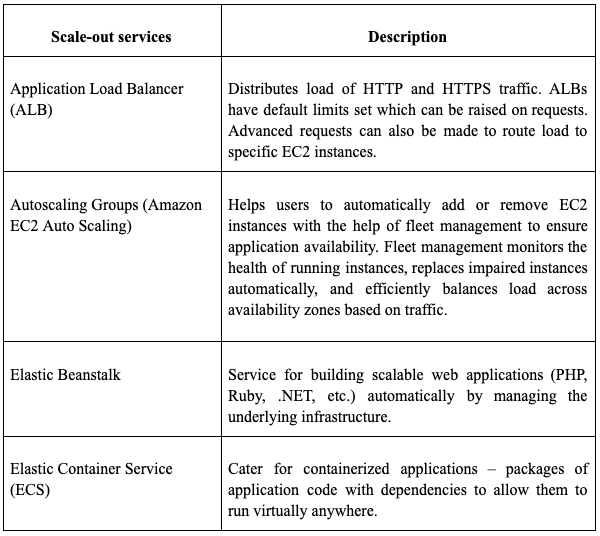
AWS provides users with the greatest number of services coupled with a dynamic array of alternative packages. Their policy of pay-as-you-go plans also allows you to pay for the services you only use.
That being said, AWS’s load balancers tend to be flooded with requests and require advance subscriptions for more seamless service due to its demand.
Azure
Microsoft’s Azure is second to AWS in popularity and is a challenging competitor in the market.
When it comes to scalability, Azure primarily offers built-in auto-scaling mechanisms designed for typical scenarios; however, users have the luxury of creating custom scalability implementations.
Autoscaling allows adding resources to handle load increases and saves money by removing resources that are sitting idle.
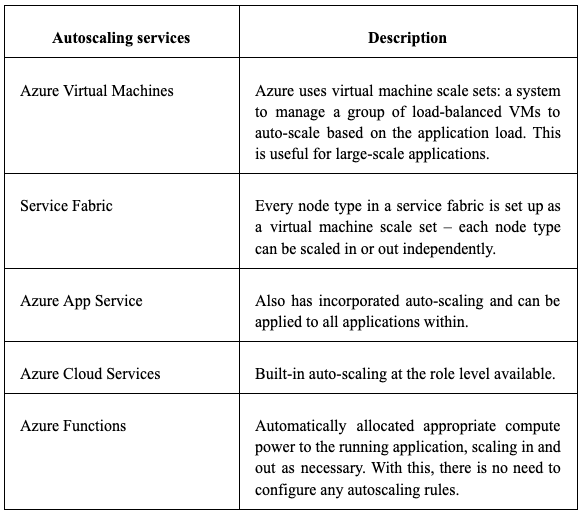
Google Cloud Platform (GCP)
GCP, a quickly rising giant, also offers its clients state-of-the-art scalability features. GCP provides autoscaling to add or remove Virtual Machine instances through a managed instance group, similar to Azure. It simply requires users to define the autoscaling policy, and the scaling is self-regulated depending on the load.
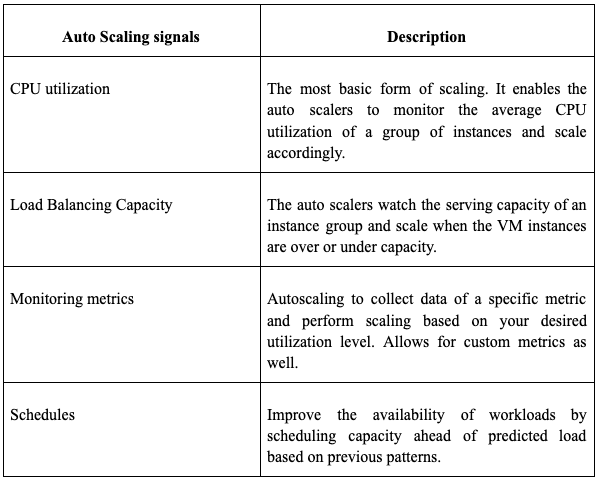
GCP’s billing by the minute policy takes it to an extreme of pay-as-you-go policy. Google Compute Engine’s load balancers are reported to be the most efficient, and GCP allows scaling of massive data applications in swift amounts of time. However, it lacks various services available compared to AWS and Azure, making it slightly less enterprise-ready.

High Availability
Amazon Web Services (AWS)
AWS being a household name provides its users with a highly available cloud infrastructure. Amazon instills the capabilities of Elastic Load Balancing, a massive network of availability zones, and auto-scaling features to ensure minimal downtime of services.
AWS is prevalent in 81 availability zones (each consisting of self-sufficient data centers) spread across 25 geographic regions globally, making it the most widespread cloud service provider.
This, coupled with the ability to balance load requests between instances contained in separate availability zones, ensures that clients receive continuous uptime of guaranteed 99.99% monthly.
Amazon also guarantees a staggering 99.999% per-year availability on their S3 storage service with SoftNAS, a state-of-the-art software-defined network to assign storage.
Azure
Dominating with massive infrastructure, Azure currently has 39 regions worldwide, each having a minimum of three availability zones – accounting for over 200 physical data centers.
In addition to a large number of availability zones, Azure allows customers to set up Availability Sets to ensure minimal downtime in case of maintenance or hardware failure.
Availability sets allow users to run a virtual machine (VM) with more than one replicated copy on different hardware in the same availability zone.
Essentially, availability zones protect customers from entirely compromised data centers, while availability sets offer to safeguard from hardware failures within a datacenter. Azure offers 99.99% of uptime per month.
Azure also offers the service of Region Pairs which enables a VM to run on different availability zones with one or more replicated copies. However, these availability zones will always be within the same geographical region.
Google Cloud Platform (GCP)
Racing to expand its infrastructure, GCP has managed to cover around 27 regions worldwide and have a total of 82 availability zones for the time being. Each zone consists of multiple clusters of physical machines, and Google’s Compute Engine preserves an abstraction layer between its availability zones and clusters.
GCP provides its users with managed instance groups – a collection of virtual machines grouped to serve a singular purpose. These instance groups can distribute the load over multiple virtual machines through a load balancer, and permit the creation of a group spread over various zones in the same region, similar to Azure’s model.
GCP offers a monthly uptime of 99.99% as well.
Check out our recently published blog post that explores global infrastructures in more depth.
Monitoring
While several third-party monitoring services are available for all cloud service platforms, below is a summary of dedicated monitoring services and features of the three discussed vendors:
Amazon Web Services (AWS)
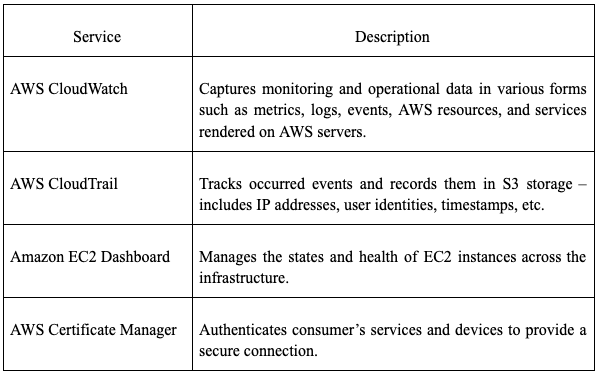
Azure
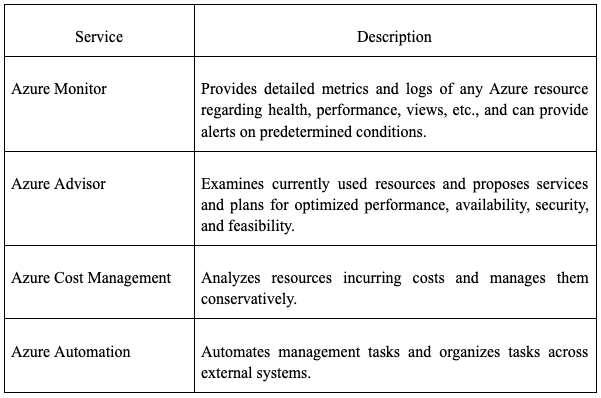
Google Cloud Platform (GCP)
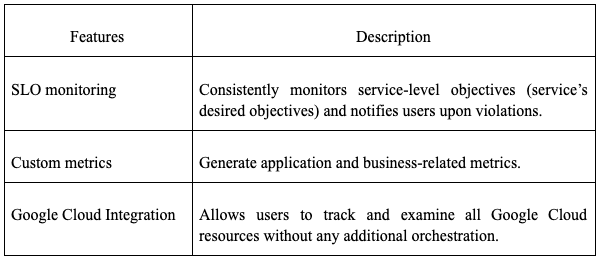
Closing Words
All three service providers have set up a very competitive market and comprehensively cater to all the key capabilities required for reliable and efficient cloud infrastructure.
AWS tends to own the bragging rights in the industry because of its role as a pioneer in cloud technology. However, this is far from being a decisive factor, for the services provided by all three do not differ significantly.
Talking about scalability, AWS and Azure seem to provide packages better suited for enterprises, but Google, with its leaps in big data analytics, provides data-extensive services like no other.
GCP’s extreme pay-as-you-go packages for small-scale users tend to be slightly cost-effective than Amazon’s and Microsoft’s.
AWS boosts the vastest physical infrastructure to date, with Azure a very close second and GCP catching up rapidly. Still, in practicality, this tends to have little effect on the availability of services.
Finally, when it comes to monitoring and assisting capabilities, AWS has a large pool of associated third-party services, with GCP being the second most popular platform for businesses. Azure tends to rely on its monitoring service as it is favored for enterprise relations.
Conclusively, trade-offs are a critical factor in deciding your cloud provider and depend focally on the features required by individual businesses.
In another post, we worked hard to produce an in-depth pricing comparison of the Big 3 cloud providers.
Are you still spending fortunes on maintaining your IT infrastructure on the cloud? Here at Clouve, we eliminate the high costs associated with your DevOps needs by providing you with comprehensive cloud managed services for a fixed monthly fee.
Sign up for your FREE 90-day access to Clouve’s cloud experts here.
